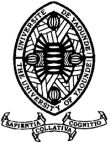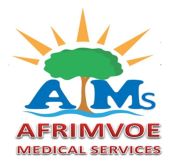CT Scan Findings in Spinal Trauma in Bouaké
Aspects Scanographiques des Traumatismes du Rachis à Bouaké
DOI:
https://doi.org/10.5281/hra.v3i1.6312Keywords:
CT scan, trauma, spine, BouakéAbstract
RÉSUMÉ Objectif. Décrire les aspects épidémiologiques et tomodensitométriques des traumatismes du rachis à Bouaké. Matériels et méthodes. Nous avons mené une étude rétrospective et descriptive sur une période de seize mois (de Janvier 2020 à Avril 2021). Elle portait sur 30 patients hospitalisés au service de neurochirurgie du Centre Hospitalier Universitaire de Bouaké et ayant réalisé une tomodensitométrie du rachis pendant la durée de leur hospitalisation et pendant notre période d’étude. L’analyse et le traitement des données ont été réalisés à l’aide des logiciels Epi info 7.2.4.0 ; Word, et Excel. Résultats. Nous avons retrouvé une prédominance masculine (83,33 %) avec un sex-ratio de 4,8. La tranche d’âge 16-30 ans était la plus touchée (53,33%). Les étiologies étaient dominées par les accidents de la voie publique (80%). Le déficit neurologique était la principale indication de réalisation de l’examen TDM (56,67%). Les atteintes rachidiennes étaient de topographie cervicale (66,67%), dorsale (20%), et lombaire (13,33%). Les lésions instables représentaient 66,67% des cas. Les fractures vertébrales pures représentaient 46,67% suivies de fractures luxations 43,33% et des luxations isolées 10%. Conclusion. La tomodensitométrie est l’examen fondamental à réaliser dans le bilan initial des traumatismes rachidiens pour une meilleure caractérisation des lésions chez les patients traumatisés du rachis. ABSTRACT Objective. To describe the epidemiological and CT scan findings in spinal trauma in Bouaké. Materials and Methods. We conducted a retrospective and descriptive study from January 2020 to April 2021. The study included 30 patients admitted to the neurosurgery department of the Bouaké University Hospital Center who underwent spinal CT scans during their hospitalization and within the study period. Data analysis and processing were performed using Epi Info 7.2.4.0, Word, and Excel software. Results. A male predominance was observed (83.33%), with a male-to-female ratio of 4.8. The age group most affected was 16-30 years (53.33%). The leading etiology was road traffic accidents (80%). Neurological deficits were the primary indication for performing CT scans (56.67%). Spinal injuries were predominantly cervical (66.67%), followed by thoracic (20%) and lumbar (13.33%) injuries. Unstable fractures accounted for 66.67% of cases. Pure vertebral fractures represented 46.67%, followed by fracture-dislocations at 43.33%, and isolated dislocations at 10%. Conclusion. CT scanning is an essential tool in the initial assessment of spinal trauma, providing crucial information for the characterization of lesions in patients with spinal injuries.References
Bierry G, Dosch JC, Moser T, Dietemann JL. Imagerie des traumatismes de la colonne vertébrale. RADIOLOGIE ET IMAGERIE MÉDICALE : Musculosquelettique-Neurologique–Maxillofaciale 2014. 31-670-A-10.
Beyiha G, Ze Minkande J, Binam T, Ibrahima T, Nda Mefo’o Jp, Sossom.A. Aspects épidémiologiques des traumatismes du rachis au Cameroun : à propos de 30 cas. J. Magh. A. Réa. Méd. Urg 2008; 15(65) :258-61.
Engrand N. traumatisme vertébro-médullaire : prise en charge des 24 premières heures. Service d’AnesthésieRéanimation, Centre Hospitalier de Bicêtre 2005; 94275: 148-70.
Furlan JC, Sakakibara BM, Miller WC, Krassioukov AV. Global Incidence and Prevalence of Traumatic Spinal Cord Injury. Canadian Journal of Neurological Sciences 2013; 40(4): 456-64.
Lee BB, Cripps RA, Fitzharris M, Wing PC. The global map for traumatic spinal cord injury epidemiology: update 2011, global incidence rate. Spinal Cord 2014; 52(2): 110-6.
Joseph C, Delcarme A, Vlok I, Wahman K, Phillips J, Nilsson Wikmar L. Incidence and aetiology of traumatic spinal cord injury in Cape Town, South Africa: a prospective, population-based study. Spinal Cord 2015; 53(9): 692-
El Tallawy HN, Farghly WM, Badry R, Rageh TA, Hakeem Metwally NA, Shehata GA, et al. Prevalence of spinal cord disorders in AlQuseir City, Red Sea Governorate, Egypt. Neuroepidemiology 2013; 41(1): 42-7.
Guarnieri G, Izzo R, Muto M. The role of emergency radiology in spinal trauma. The British journal of radiology 2015; 89(1061): 08-33.
Motah M, Boris TY, Ngonde S, Vdp D, Sone M, Kuate C, et al. Prise en charge pre-hospitalière des patients victimes de traumatisme vertébro-médullaire en milieu africain. Health Sciences and Diseases 2014;15(2): 1-6.
Doleagbenou AK, Ahanogbé HK, Kpelao ES, Beketi AK, Egu K. Bilan de 24 mois d’activites neurochirurgicales au Centre hospitalier regional lome commune (Togo). African Journal of Neurological Sciences 2019; 38(1): 3 10.
Ramarokoto M, Rakotondraibe W F, Rakotoarivelo J A, Vahininandrasana F U, Ratovondrainy W, Rabarijaona M. Traumatisme vertebro médullaire au Centre Hospitalo Universitaire de Mahajanga. Jaccr Africa. 2019; 3(4): 356-62.
Brieux Ekouele Mbaki H, Boukassa L, Brice Ngackosso O et al. Prise en charge hospitalière des traumatismes du rachis cervical à Brazzaville. Health Sciences and Diseases 2017; 18(1): 43-7.
Obame R, Mabame I, Lawson JMM, Obiang PCN, Ngomas JF, Ada LVS, et al. Profil Épidémiologique et Évolutif des Traumatismes Vertébro-Médullaires Admis en Réanimation au Centre Hospitalier Universitaire d’Owendo. Health Sciences and Diseases 2019; 20(2) : 109-12.
Dramane C Aspects épidémiologiques, cliniques et thérapeutiques des traumatismes vertébromédullaires dans le service de neurochirurgie de l’hôpital du mali Thèse de méd. université des sciences des techniques et des technologies de Bamako 20019
Bello F, Oumarou H, Nchufor RN, Tsafack AL, Messanga GM, Tchemeza AD, et al. Aspects Diagnostiques, Thérapeutiques et Pronostiques des Traumatismes du Rachis à Yaoundé. Health Sciences and Diseases 2020 ;21(12) : 59-62.
Mbaki HBE, Bambino SBK, Ngackosso OB, Boukassa L. Prise en Charge Chirurgicale des Traumatismes du Rachis Thoraco-lombo-sacré à Brazzaville. Health Sciences and Diseases 2018 ;19(3) : 73-7.
Doumbia A, Kone Y, Maiga O, Malle M, Diallo M. Aspects scanographiques des traumatismes du rachis. Journal Africain d’Imagerie Médicale 2019 ;11 (3): 354-7.
Mbaki HBE, Boukassa L, Ngackosso OB, Bambino SBK, Elombila M, Moyikoua R. Prise en Charge Hospitalière des Traumatismes du Rachis Cervical à Brazzaville. Health Sci Dis 2017 ; 18(1): 43-7.
Alam N, Raziul HM, Kamaluddin M, Sarker AC, Murshed A, Khan M et al. Cervical spinal injury: experience with 82 cases. International Congress Series 2002;1247: 591–6.
Bouali N, Khaouas M, Benaida A, Saadi ASA, Nemer M, Chettouh W, et al. Traumatismes du rachis dorsolombaire : Avicenna Medical Research. 2022; 1(3):103‑19.
Platzer P, Hauswirth N, Jaindl M, Chatwani S, Vecsei V, Gaebler C. Delayed or missed diagnosis of cervical spine injuries. J Trauma 2006; 61(1):150‑5
Downloads
Published
How to Cite
Issue
Section
License
Copyright (c) 2024 Brou Lambert Yao, Sara Carole Sanogo, Malick Soro, Kouamé Paul Bon-Fils Kouassi, Akoli Eklou Baudoiun Bravo-Tsri, Kesse Emile Tanoh, Allou Florent Kouadio, Bouassa Davy Mélaine Kouakou, Jean Jacques Goua, Issa Konate

This work is licensed under a Creative Commons Attribution-NonCommercial-NoDerivatives 4.0 International License.
Authors who publish with this journal agree to the following terms:
- Authors retain copyright and grant the journal right of first publication with the work simultaneously licensed under a Creative Commons Attribution License CC BY-NC-ND 4.0 that allows others to share the work with an acknowledgement of the work's authorship and initial publication in this journal.
- Authors are able to enter into separate, additional contractual arrangements for the non-exclusive distribution of the journal's published version of the work (e.g., post it to an institutional repository or publish it in a book), with an acknowledgement of its initial publication in this journal.
- Authors are permitted and encouraged to post their work online (e.g., in institutional repositories or on their website) prior to and during the submission process, as it can lead to productive exchanges, as well as earlier and greater citation of published work










